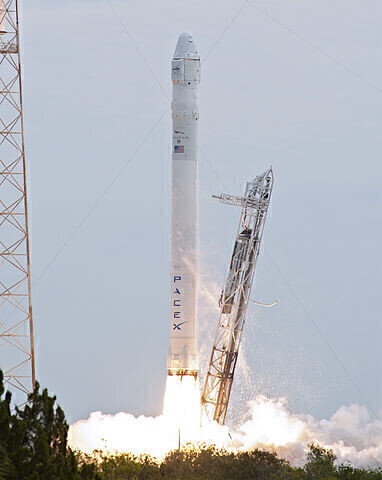GC, MDGC
How Does Chromatography Work in Low Gravity Environments?
Aug 07 2015
With the dramatic explosion of the SpaceX rocket during its launch in June 2015, school children lost science experiments that were part of the cargo taking supplies to the International Space Station. One of the experiments was designed to test the effect of gravity on chromatography.
Since the children will have to wait for their answer — let’s take a look and see if we can provide any clues as to how chromatography works in space — a low gravity environment.
What does chromatography need?
At its most basic chromatography needs four things to separate a mixture into the base components:
- A stationary phase — either a solid or a liquid for the sample molecules to grip onto.
- A mobile phase — a means to carry the sample across the stationary phase, can be liquid or gas.
- A sample — the mixture that needs separating into its various components.
- A support mechanism — for example a column outer.
If we have these four items we can carry out a separation — they are the only things that the early pioneers of chromatography or school children have at their disposal.
How does chromatography work?
If we want to know how low gravity might affect chromatography, we have to have an understanding of how chromatography works and the forces involved. Chromatography relies on the partition, or separation, of the sample between the mobile and stationary phases.
In a chromatography column, if a sample component has an affinity for the mobile phase, it gets carried along with the liquid and quickly out of the column. If the sample prefers the stationary phase then the component takes longer to travel through the column as it interacts with the stationary phase.
It is this effect that separates the sample into its components and gives us the different retention times we get in a chromatography run. For more on adsorption have a look at this article, Adsorption, Absorption and Desorption — What’s the Difference
Chromatography and gravity
How does gravity affect this? Well a simple test is to set up two paper chromatography experiments. One with the water rising against gravity and one with the water flowing with gravity. And the result? No difference in my experiment — the ink spot was separated equally in both scenarios.
This is because the gravity is such a weak force relative to the other forces at work in chromatography. The adsorption forces binding solute molecules to the stationary phase are more powerful than the gravitational forces, and capillary forces easily carry water and sample molecules against gravity.
So what would the students have noticed from their experiments? Hopefully that gravity plays little part in chromatography, otherwise you should make sure all your columns are aligned exactly the same.
Image By Tony Gray and Robert Murray [Public domain], via Wikimedia Commons
Digital Edition
Chromatography Today - Buyers' Guide 2022
October 2023
In This Edition Modern & Practical Applications - Accelerating ADC Development with Mass Spectrometry - Implementing High-Resolution Ion Mobility into Peptide Mapping Workflows Chromatogr...
View all digital editions
Events
Apr 23 2024 Kintex, South Korea
Apr 23 2024 Seoul, South Korea
Apr 28 2024 Montreal, Quebec, Canada
May 05 2024 Seville, Spain
May 15 2024 Birmingham, UK














